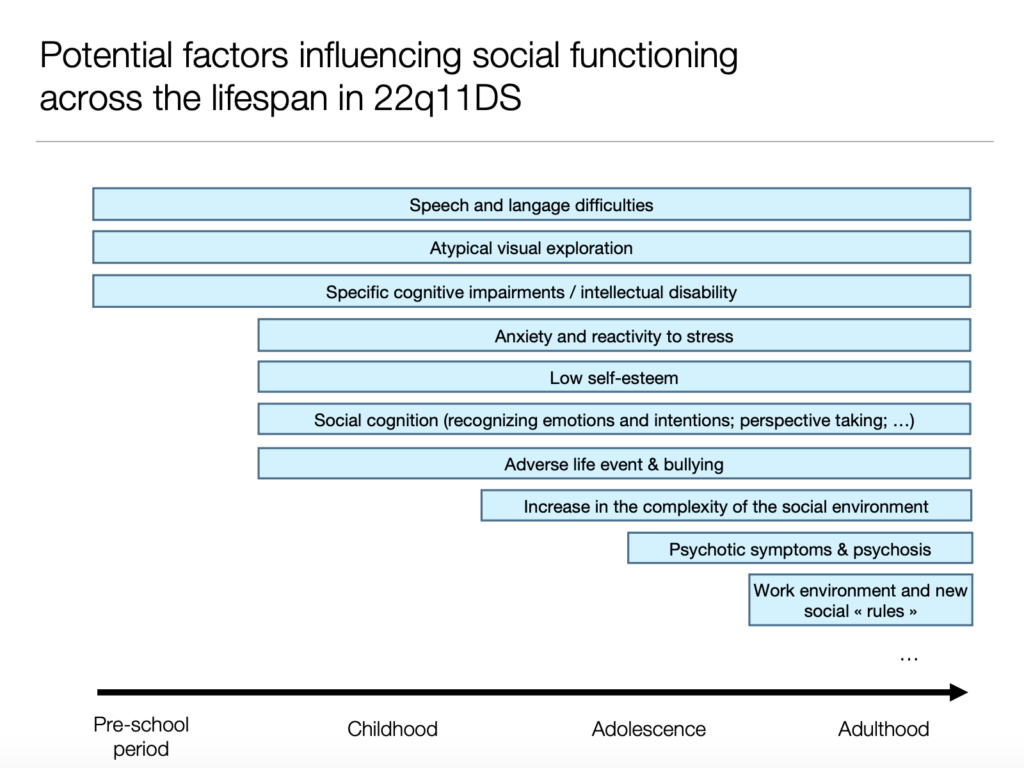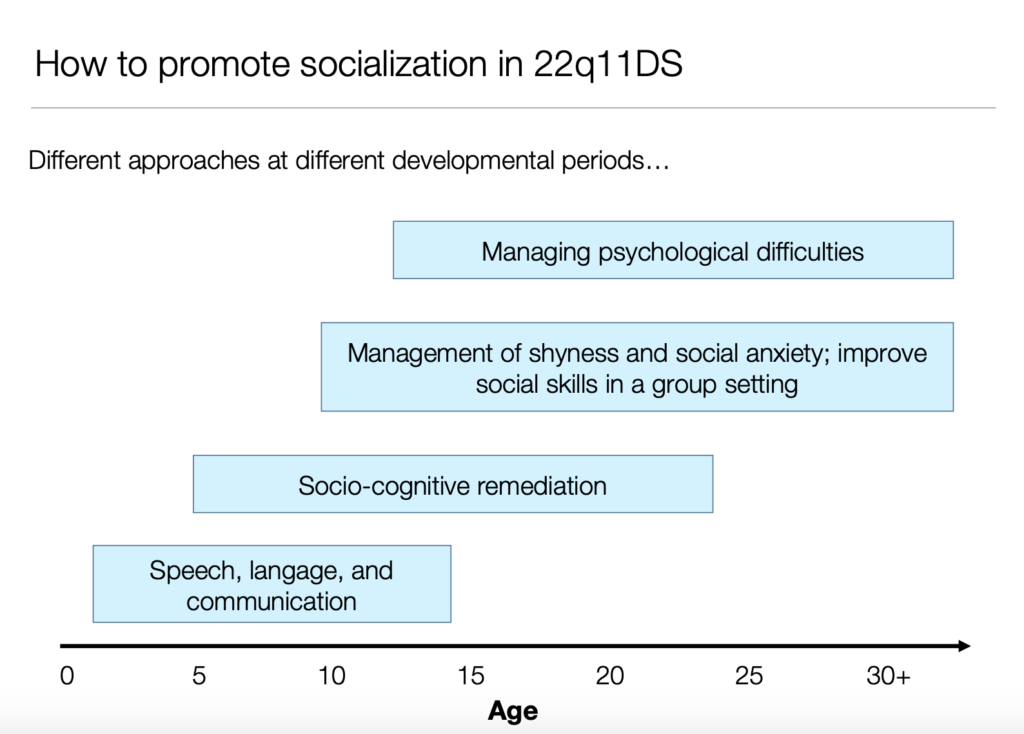« I would like to be with others but I am only feeling well on my own. When I am with others, I am extremely uncomfortable, I don’t move, I can’t talk to people. Yet I want to!!!» (15 years)
« I go to others but then I don’t know what to do. Afterwards, I tell myself that I didn’t react as I should have… » S. (16 years)
During a keynote speech made by Maude Schneider at the 3rd international conference on 22q11, the different factors contributing to social difficulties in 22q11DS across the lifespan were described.
Social impairment in daily life
The author collected data showing that adolescents and young adults with 22q11DS have a higher preference for being alone during an interaction with someone and spend 25% more time alone than their unaffected counterparts. Yet, when they are lonely, 22q11DS have a higher preference for being with others.
The authors also collected testimony from teenagers and young adults that allow us to better understand the impact that 22q11 can have on daily life.
Factors contributing to social difficulties in 22q11DS across the lifespan
The author described several that are likely to influence social functioning across the lifespan, as shown below:

How to promote socialization in 22q11DS?
The authors concludes in showing different approaches that can be used at developmental periods:

To read the full presentation, click here.